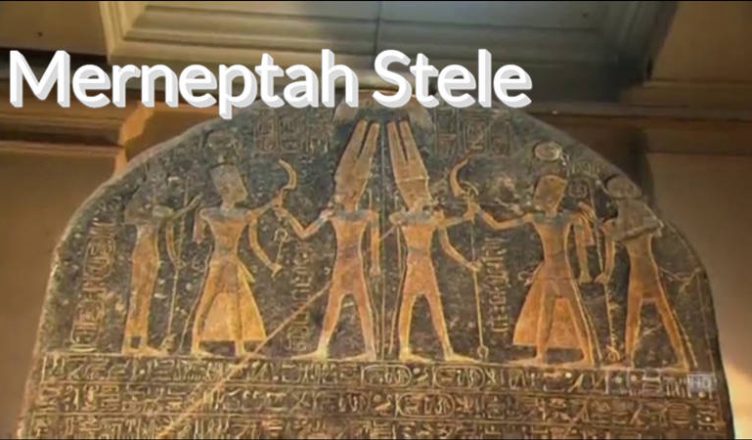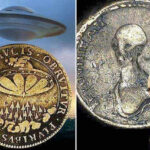More than 3,200 years ago, the ancient Egyptian pharaoh Merneptah erected a stone stele to commemorate a victorious battle, known as the Merneptah Stele. Unexpectedly, this inscription has become the oldest known written evidence of the existence of Israel. Consequently, many scholars refer to this stone as the “Israel Stele.” The reference to Israel in the inscription is limited to just one line, which translates to “Israel is wasted, bare of seed.” Although this record is grim for the Jewish people, at the time, Pharaoh Merneptah’s great army swept through Canaan, and not only were the Jewish people nearly wiped out, but several other Canaanite tribes and nations also fell to the pharaoh’s might. The inscription documents these events. Here are seven facts and historical significance of the Merneptah Stele:
1. Record of Victory – The Israel Stele and the Glory of Ancient Egypt:
The Merneptah Stele, also known as the Israel Stele or Pharaoh Merneptah’s Victory Stele, is a massive dark granite monument erected by the ancient Egyptian Pharaoh Merneptah between 1213 and 1203 BC. On this stele, Pharaoh Merneptah inscribed a commemorative text, documenting his victory in a crucial battle. In this battle, the Egyptian army successfully defeated two Libyan tribes, Libu and Meshwesh, along with their sea allies.
Furthermore, the last two lines of the inscription mention another battle that took place in the region of Canaan. Pharaoh Merneptah claims in this text that he defeated various nations and armies, including the Philistine city of Ashkelon, the Canaanite city of Gezer, Yanoam, and Israel.
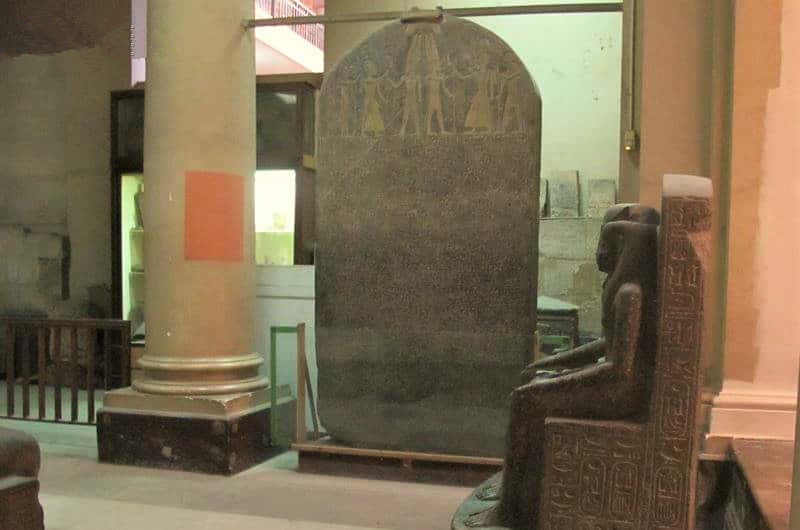
2. Discovery of the Merneptah Stele:
The Merneptah Stele was discovered by the Egyptologist Flinders Petrie in 1896 in the mortuary temple of Pharaoh Merneptah in the ancient city of Thebes. At the time, Petrie commented on the significance of the stele, stating, “This stela will be better known in the world than anything else I have discovered.” Today, the stele is housed in the Egyptian Museum in Cairo, with a portion of the inscription found in Karnak. The dimensions of the stele are approximately 318 centimeters (about 10 feet) in height and 163 centimeters in width. The inscription primarily consists of descriptive text, concluding with a poetic section in the style of inscriptions from the New Kingdom period of Egypt. The date recorded in the inscription is “in the fifth year of Pharaoh Merneptah, in the third month of summer, on the third day,” which is estimated to be around 1209 or 1208 BC.
3. Historical Significance:
The reason this inscription is famous is that it is the only ancient Egyptian document that mentions Israel (“Isrir” or “Israel”). It is the oldest known evidence of the existence of Israel in history. Therefore, many scholars refer to it as the Israel Stele. However, this title can be somewhat misleading because the content of the inscription does not primarily focus on Israel; it merely mentions it incidentally in the text.
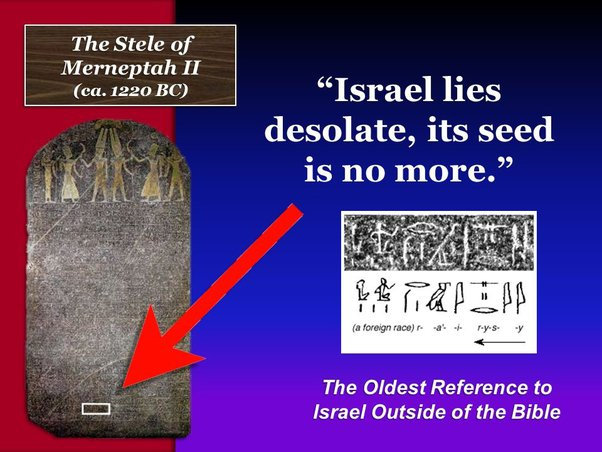
Throughout the inscription, only one line mentions Israel, which is translated as “Israel is wasted, bare of seed.” Another translation could be “Israel lies waste, its seed no longer exists.” The description of Canaan in the inscription is quite limited, and Israel is mentioned only once alongside Ashkelon, Gezer, and Yanoam. The inscription details Pharaoh Merneptah’s campaign in the Canaan region, but its main focus is on his victory over the Libyan tribes and their sea allies. The inscription contains sentences such as, “Canaan is captive with all woe. Ashkelon is conquered. Gezer is taken. Yanoam is nonexistent. Israel is wasted, bare of seed.” While this inscription provides valuable information for the study of Israel’s history, its primary emphasis remains on Pharaoh Merneptah’s victory and events in the Canaanite region.
4. Unraveling the Enigma of the Canaanite Campaign:
Currently, the scholarly debate surrounding this inscription primarily centers on whether Pharaoh Merneptah indeed conducted a Canaanite campaign. There are also questions about whether the inscription accurately describes the Canaanite campaign because some question whether it acknowledges a defeat, similar to Assyrian records. Skeptical viewpoints suggest that another inscription about the Battle of Qadesh clearly indicates that Merneptah’s father, Ramesses II, had a firm grip on Canaan. Therefore, it seems somewhat peculiar that Merneptah would launch a campaign to conquer Canaan after his ascension unless there was a local uprising that compelled Merneptah to believe it was necessary to quell the rebellion and reestablish Egypt’s rule. If this were the case, then Merneptah’s rule over Canaan might not have been very secure.
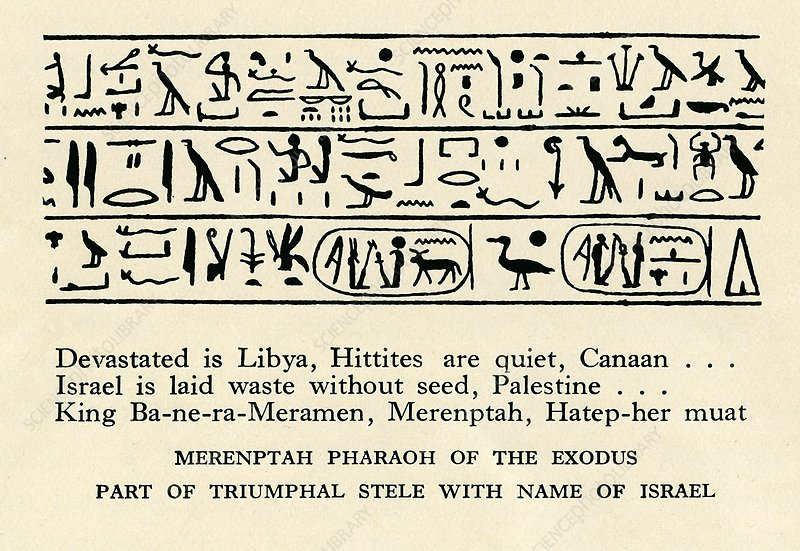
5. Deciphering the Merneptah Stele:
Since the inscription mentions “Israel” only once, experts have encountered difficulties in interpreting the specific reference of this term. The inscription clearly states that “Israel” is a people rather than a nation, as there is no hieroglyphic symbol for “nation” in the text. In contrast, the enemies mentioned alongside “Israel,” such as Ashkelon, Gezer, and Yanoam, have hieroglyphic character combinations that include a symbol for “city,” graphically depicted as “a throwing stick with three mountains.” However, in the character combination representing “Israel,” a different symbol denoting foreign or non-Egyptian people is used, shaped like “a throwing stick with a man and a woman, with three vertical lines below.” Egyptians typically used this symbol to represent nomadic or non-urbanized people outside of Egypt. Therefore, this way of expression in the inscription suggests that in the fifth year of Pharaoh Merneptah’s reign, the Israelites might have been partially nomadic or living in rural areas. Aside from this analysis, scholars have limited knowledge of other aspects of Israel at that time.

6. Unraveling the Mystery of Ancient Egypt and Israel:
Donald Redford proposed a theory that the mentioned “Israel” might have been a nomadic group similar to the Bedouins, and the Egyptians referred to them as “Shasu.” Redford pointed out that in the Soleb Temple built by Pharaoh Amenhotep III, there is a list of “Shasu” groups dating to the 15th century BC, which mentions a tribe named “Yhw in the land of the Shasu.” This “Yhw” is believed to be an early form of “Yaw” or “Yahweh,” which is the name of the God of Israel in the Hebrew Bible (the Old Testament of the Christian Bible). However, the theory of “Israel being connected to the Shasu” is questioned because the inscription on the Merneptah Stele does not depict the Israelites as Shasu. In the inscription, the attire and hairstyles of the Israelites are identical to those of the inhabitants of Canaanite cities like Ashkelon, Gezer, and Yanoam. The residents of Canaanite cities, including Ashkelon, are defending their cities, while the “Israel” people are mentioned after these Canaanite city residents. Clearly, a definitive and reliable conclusion on this issue has yet to be reached.
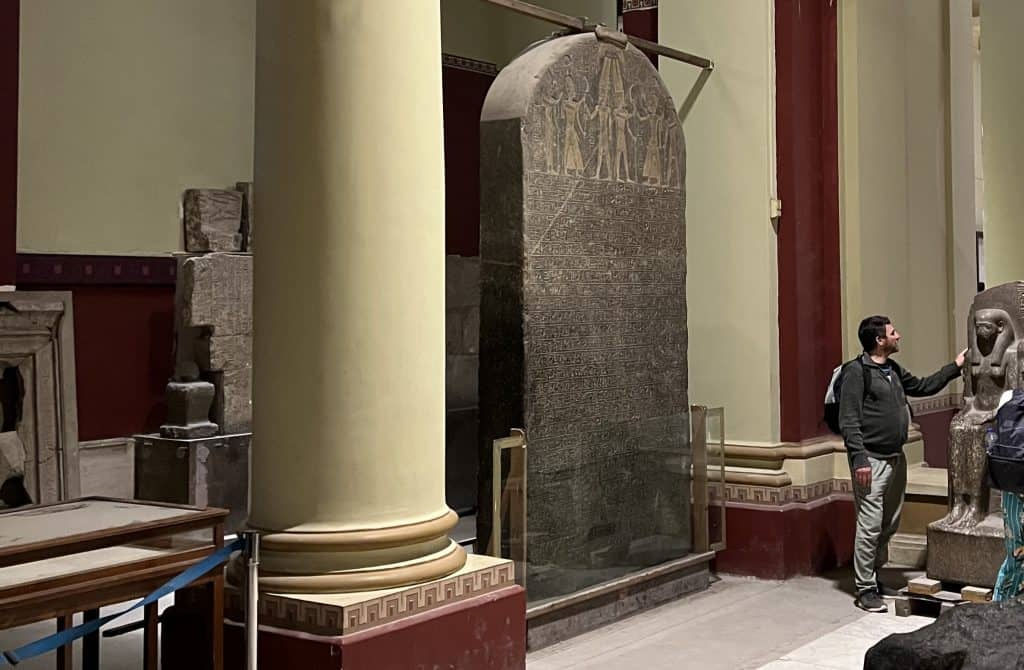
After the Merneptah Stele, the next non-Biblical document mentioning “Israel” is the Mesha Stele, dating to about 300 years later. The Mesha Stele’s inscription records a war between the Israelite king Omri and the Moabites. This 200-year period is relatively loosely documented in the Bible, including the transformation of Israel into a united kingdom, which still requires further research. Nonetheless, the Merneptah Stele, as a significant source of information on Israel’s history, represents the first official record of “Israel,” albeit with limited information.
7. Historical Controversies and the Authenticity of the Inscription:
The current debate revolves around whether Pharaoh Merneptah’s Canaanite campaign actually took place. There are also doubts about whether the inscription accurately reflects this campaign, with concerns that it may not acknowledge a defeat, similar to Assyrian records. Skeptical viewpoints suggest that another inscription about the Battle of Qadesh clearly indicates that Merneptah’s father, Ramesses II, had a firm grip on Canaan. Therefore, it seems somewhat peculiar that Merneptah would launch a campaign to conquer Canaan after his ascension, unless there was a local uprising that compelled Merneptah to believe it was necessary to quell the rebellion and reestablish Egypt’s rule. If this were the case, then Merneptah’s rule over Canaan might not have been very secure.
END:
In conclusion, the Merneptah Stele stands as a remarkable artifact in the annals of history, offering a glimpse into the ancient world and shedding light on the early mentions of “Israel.” While its interpretation remains a subject of debate, the inscription remains a critical piece in our understanding of the past.
As we look to the future, continued research and archaeological discoveries may further unravel the mysteries surrounding the Canaanite campaign and the true nature of the Israelites mentioned on the stele. This ancient relic serves as a testament to the enduring quest for knowledge and the unceasing exploration of the past, offering the promise of even deeper insights into the complex tapestry of history. The Merneptah Stele will continue to captivate the curiosity of scholars and history enthusiasts, ensuring that its significance endures through the ages.
More UFOs and mysterious files, please check out our YouTube channel: MysFiles
Two Incredible Pyramid Discoveries In 2023 – Mysterious Chamber and Pyramids in Jungle
